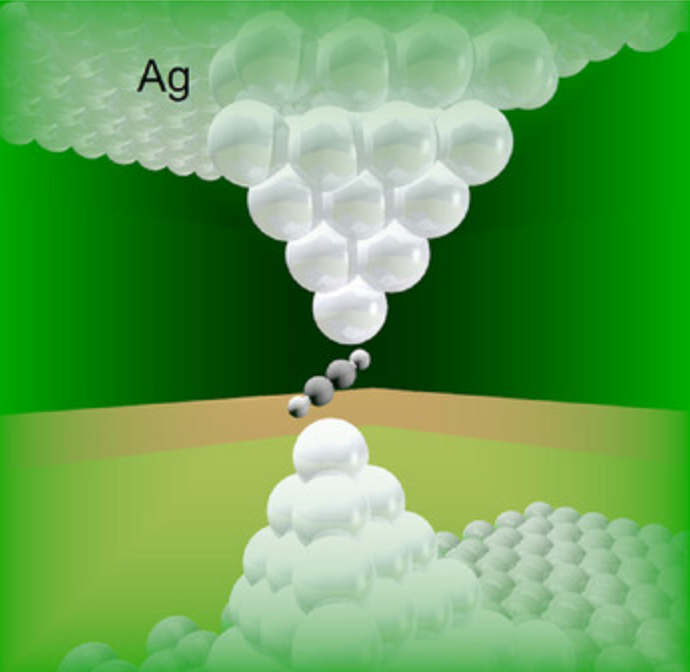Scientists create “chemical cookbook” containing recipes for the creation of life
Researchers have taken a unique approach to the search for extraterrestrial life, creating a “cookbook” filled with hundreds of recipes

[Oct. 7, 2023: Staff Writer, The Brighter Side of News]
Researchers have taken a unique approach to the search for extraterrestrial life, creating a "cookbook" filled with hundreds of potential life-sparking chemical recipes. (CREDIT: Creative Commons)
Life on distant planets may not resemble Earth's intricate dance of species and ecosystems, but the universe has a finite assortment of chemical ingredients. Leveraging this concept, researchers at the University of Wisconsin–Madison have taken a unique approach to the search for extraterrestrial life, creating a "cookbook" filled with hundreds of potential life-sparking chemical recipes.
Before delving deep into the findings, it's essential to grasp that life – as we understand it – hinges on chemical reactions. From our cells' metabolism to reproduction, our very existence is a symphony of chemistry. Betül Kaçar, a NASA-backed astrobiologist and UW–Madison bacteriology professor, sheds light on this, remarking, “The origin of life is a something-from-nothing process. But for life to materialize, that 'something' must repeat. It’s about establishing a self-reproducing pattern of reactions.”
The Essence of Autocatalysis
At the heart of the team's study lies the principle of autocatalysis. Simplified, autocatalytic reactions refer to chemical reactions where the product encourages the very same reaction to keep repeating. Imagine a community of rabbits: a few pairs of rabbits produce offspring, which then mature and reproduce, leading to exponential growth.
Life on distant planets may not resemble Earth's intricate dance of species and ecosystems, but the universe has a finite assortment of chemical ingredients. (CREDIT: Betül Kaçar)
Zhen Peng, a postdoctoral researcher in the Kaçar laboratory, clarifies their groundbreaking discovery, “We previously believed such reactions were scarce. But our research reveals they’re not as rare as assumed, provided we search correctly.”
Focus on Comproportionation Reactions
Their investigative gaze centered on comproportionation reactions. Such reactions involve two compounds containing the same element but with different electron counts or reactive states. They combine, creating a new compound where the element assumes a median reactive state.
Related Stories
Crucially, to be autocatalytic, the reaction's result must also act as the starting material for the subsequent reaction. “The end product fuels the next cycle of reactions. With the right conditions, you can kickstart a process with a few outputs. Every cycle yields at least one additional output, accelerating the reaction pace,” explains Zach Adam, a co-author of the study and a UW–Madison geoscientist.
While it may be tempting to envision an alien life form with familiar features like floppy ears and soft fur, Kaçar advises a more grounded approach. She envisions scientists drawing inspiration from their research to simulate these reactions under extraterrestrial conditions.
Kaçar highlights the challenges and potential of their work, stating, “While we can't go back in time to witness Earth's first life, in controlled settings, we can recreate various planetary conditions to explore how life might originate.”
Betül Kaçar is a NASA-supported astrobiologist and professor of bacteriology at the University of Wisconsin–Madison. (CREDIT: University of Wisconsin–Madison)
Spearheading a NASA-endorsed consortium named MUSE (Metal Utilization & Selection Across Eons), Kaçar's team is particularly interested in reactions involving molybdenum and iron. She eagerly anticipates discoveries stemming from the more exotic recipes in their universal cookbook.
Renowned astronomer Carl Sagan once proclaimed, "If you want to bake a pie from scratch, first you must create the universe." Kaçar's spin on this notion encapsulates the essence of their research. “To truly comprehend the universe,” she says, “we might just need to bake a few pies.”
Exploring the Fundamental Elements that Nourish Life
Life on Earth unfolds through a delicate balance of essential elements, woven together to create the rich tapestry of organisms we observe. A deeper grasp of these vital ingredients not only enhances our understanding of terrestrial life but also propels our search into the cosmos for other life forms. Let's embark on an exploration of the key components that sustain life:
Water: The Essential Elixir
Water stands paramount, underpinning every form of life on Earth. Beyond being a mere ingredient, it acts as a solvent enabling biochemical interactions and plays a pivotal role in maintaining temperature.
Carbon: The Architect of Molecules
Serving as the structural framework of organic molecules, carbon—found in DNA, proteins, fats, and sugars—is indispensable to life. Its singular ability to establish four bonds affords an immense array of complex molecular structures.
Nutrients: The Fuel of Existence
Organisms draw upon nutrients, such as essential elements nitrogen, phosphorus, and sulfur, to fuel their biological activities. While plants extract nutrients from soil and sunlight, animals acquire them through consumption of other organisms.
Energy: The Sustaining Force
Energy is imperative for life, with the Sun being Earth’s primary energy source. Through photosynthesis, plants harness sunlight, converting it to chemical energy, which is subsequently accessed by animals through consumption.
Atmosphere: The Enveloping Shield
An atmosphere, enveloping a planet, supplies vital gases like oxygen for humans and animals, and carbon dioxide for plant photosynthesis. Additionally, it shields life from detrimental solar radiation.
Temperature: The Biochemical Maestro
Optimal temperature ranges are crucial for facilitating biochemical reactions, providing the conditions for liquid water, an essential medium for life. Temperature extremes can adversely affect cellular activities.
DNA and RNA: The Custodians of Heredity
DNA and RNA, the molecular custodians of genetic information, orchestrate the growth, development, and reproduction of organisms, where DNA delineates the blueprint and RNA ensures accurate protein synthesis.
Cell Membranes: The Guardians of Cellular Integrity
Recognizing life as inherently cellular, cell membranes—primarily lipid-based structures—delineate the cell's interior from its external environment, governing substance exchange.
The cosmos, with its immense expanse and diversity, exhibits a consistent set of fundamental life-sustaining ingredients. As we navigate the quest for extraterrestrial life, these vital elements serve as our celestial compass, inspiring exploration in regions where they may converge.
For more science and technology stories check out our New Discoveries section at The Brighter Side of News.
Note: Materials provided above by The Brighter Side of News. Content may be edited for style and length.
Like these kind of feel good stories? Get the Brighter Side of News' newsletter.



